An easy sheet pan recipe with fork-tender baked honey Dijon mustard salmon, Cajun seasoned cauliflower, and potatoes served with a creamy honey mustard dressing, making this the best one-tray baked honey mustard salmon healthy dinner.
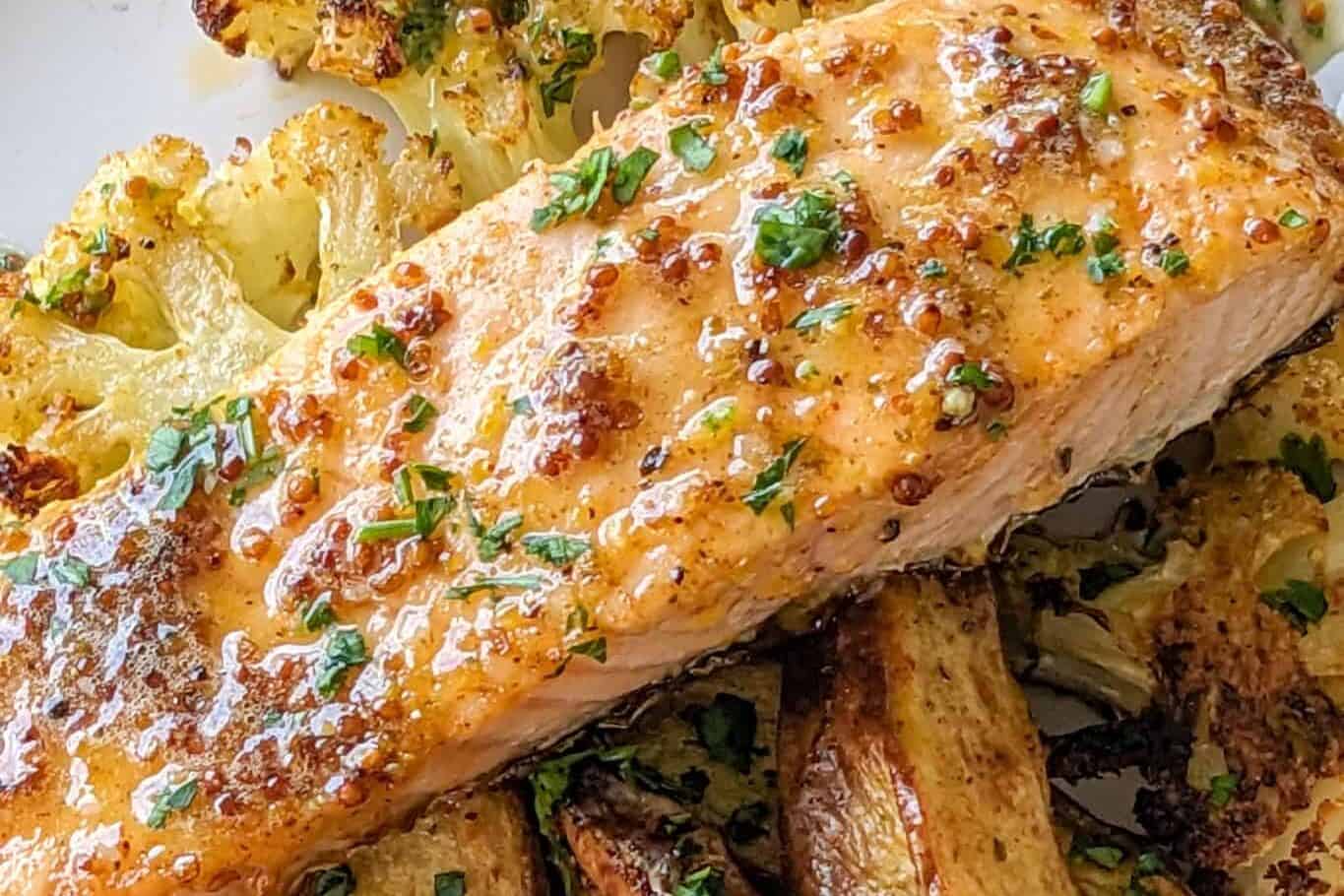
Table of Contents
Jump to:
- Busy Weeknight Sheet Pan Meal
- Quick Delicious Dinner
- Why You’ll Love This Recipe
- Ingredients with Steps
- Culinary Glossary
- Instructions with Pictures
- Equipment
- Kitchen Must-Haves Reviews
- Substitutions
- Variations
- Storage and Reheating
- 5 Cooking Tips
- Frequently Asked Questions
- Fish Recipes
- One Pot Meal Recipes
- 📖 Recipe
- Subscribe to my YouTube Channel
- Have a Comment or Question?
Busy Weeknight Sheet Pan Meal
Transform any night of the week into a culinary delight with this sheet pan-baked Cajun Honey Mustard Salmon, accompanied by cauliflower steaks and potatoes. The best part?
It's not only a feast for your mouth but also a savior for your busy schedule. This recipe is the epitome of simplicity, fitting seamlessly into your meal plans with minimal effort. The magic lies in the sheet pan approach, turning the trio of salmon, cauliflower, and potatoes into an easy dinner masterpiece.
Quick Delicious Dinner
The ease of preparation is a great feature, but the real highlight is the strong flavor, each bite offers a balance of Cajun spice and honey mustard sweetness. It’s a simple meal that’s easy to make and full of flavor. Sheet pan dinners are now more enjoyable.
Why You’ll Love This Recipe
Packed with flavor and fuss-free, the sweet-tangy honey-mustard glaze meets smoky Cajun spice, creating a vibrant taste experience in every forkful, all while using just one sheet pan for easy cleanup
Get More Easy Cooking Salmon Recipes:
- Air Fryer Salmon with Pepper Cabbage Slaw and Yellow Rice
- Smothered Salmon Salisbury Steak with Tomato Mushroom Gravy
- Sesame Chili Salmon Rice Bowl
- Air Fryer Roasted Harissa Salmon with Paprika Potatoes and Brussels Sprouts
Ingredients with Steps
Create a yummy wet rub in a medium mixing bowl by combining olive oil, Cajun seasoning, salt, and pepper. Slice the cauliflower into 1-inch-thick steaks. Then, place the cauliflower steaks on a parchment-lined sheet pan, brushing both sides with the wet rub.
Bake the Salmon and Vegetables
Next, quarter the baby Dutch yellow potatoes, toss them in the rub, and add them to the sheet pan, leaving space for the salmon. Bake the vegetables halfway. After the initial bake, season and add the salmon to the pan, flip the cauliflower and potatoes, then return them to the oven to bake.
Make the Dressing
Meanwhile, prepare a salmon sauce with Dijon mustard, honey, parsley, salt, and pepper. Once the salmon is cooked, brush it with the honey mustard sauce. Then, whisk mayonnaise, lemon juice, and chopped parsley for the dressing. Finally, garnish the plated dish with reserved parsley.
Culinary Glossary
This section provides concise definitions of key ingredients and techniques to enhance understanding and improve cooking skills related to this recipe.
- Sheet pan – A large, rimmed baking tray ideal for roasting multiple ingredients simultaneously.
- Wet rub – A flavorful mixture of oil and spices used to coat proteins or veggies before cooking.
- Cauliflower steak – A thick, flat slice of cauliflower that roasts like a steak while maintaining texture.
- Whole-grain Dijon mustard – Dijon mustard with visible mustard seeds, offering extra texture and mellow heat.
- Cajun seasoning – A zesty blend typically of paprika, garlic powder, onion powder, and cayenne, lending warmth and depth.
- Kosher salt – Coarse salt prized for its purity and ease in seasoning evenly.
- Parchment paper – Non-stick baking paper that helps with cleanup and prevents sticking.
- Meat thermometer - A tool to check internal temperatures (e.g., 145°F for salmon) to ensure safe, juicy results.
- Caramelization – The browning of natural sugars when roasted, creating a richer flavor.
- Flake (fish) – The ideal test for doneness—salmon should gently separate into flakes when prodded with a fork.
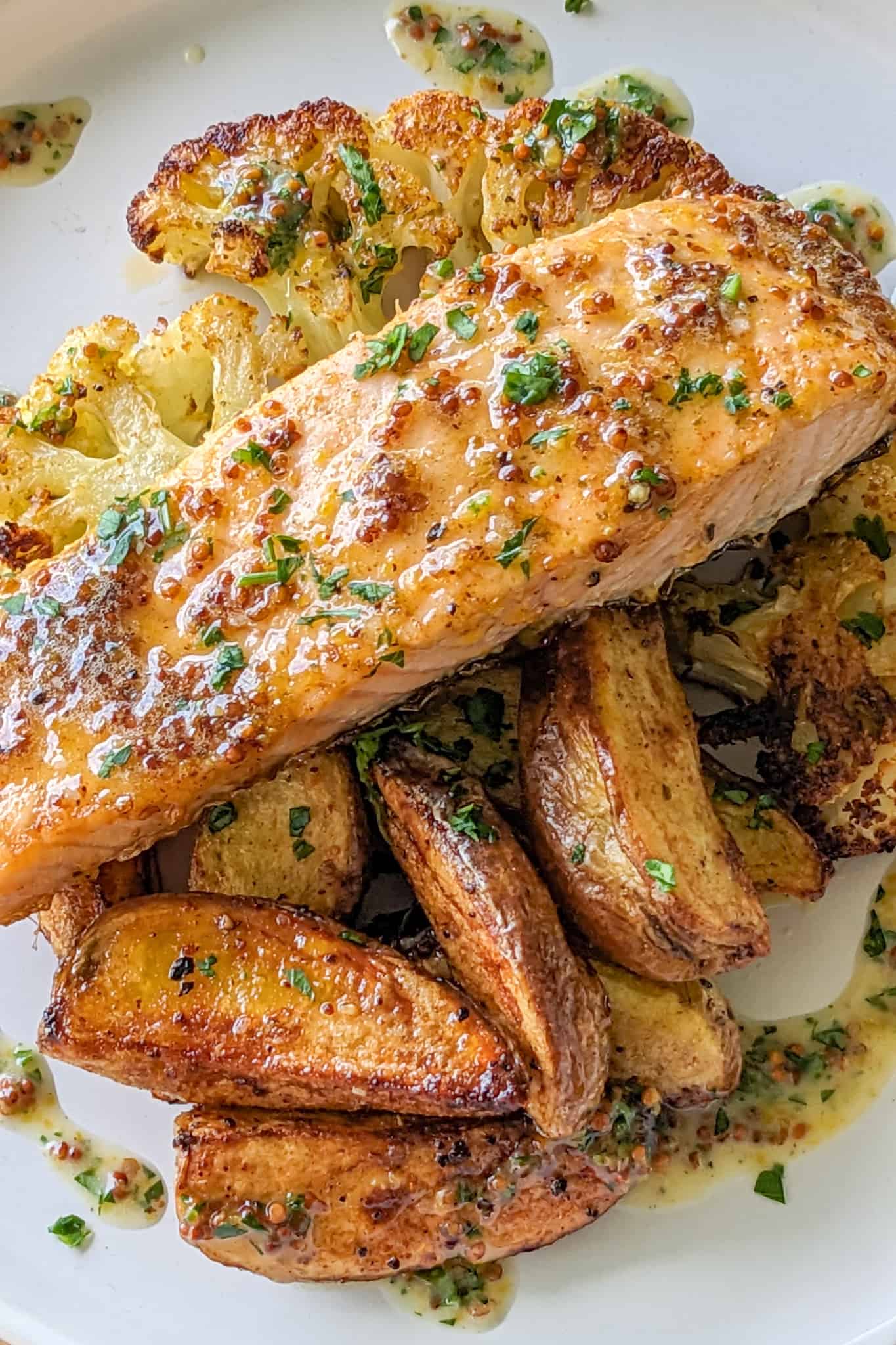
Instructions with Pictures
Hey Explorers! Get ready to launch on a culinary journey with the step-by-step photo instructions for the Baked Cajun Honey Mustard Salmon, Cauliflower Steaks, and Potatoes recipe below, with each image guiding you through the process. Enjoy!
Prepare the Vegetables
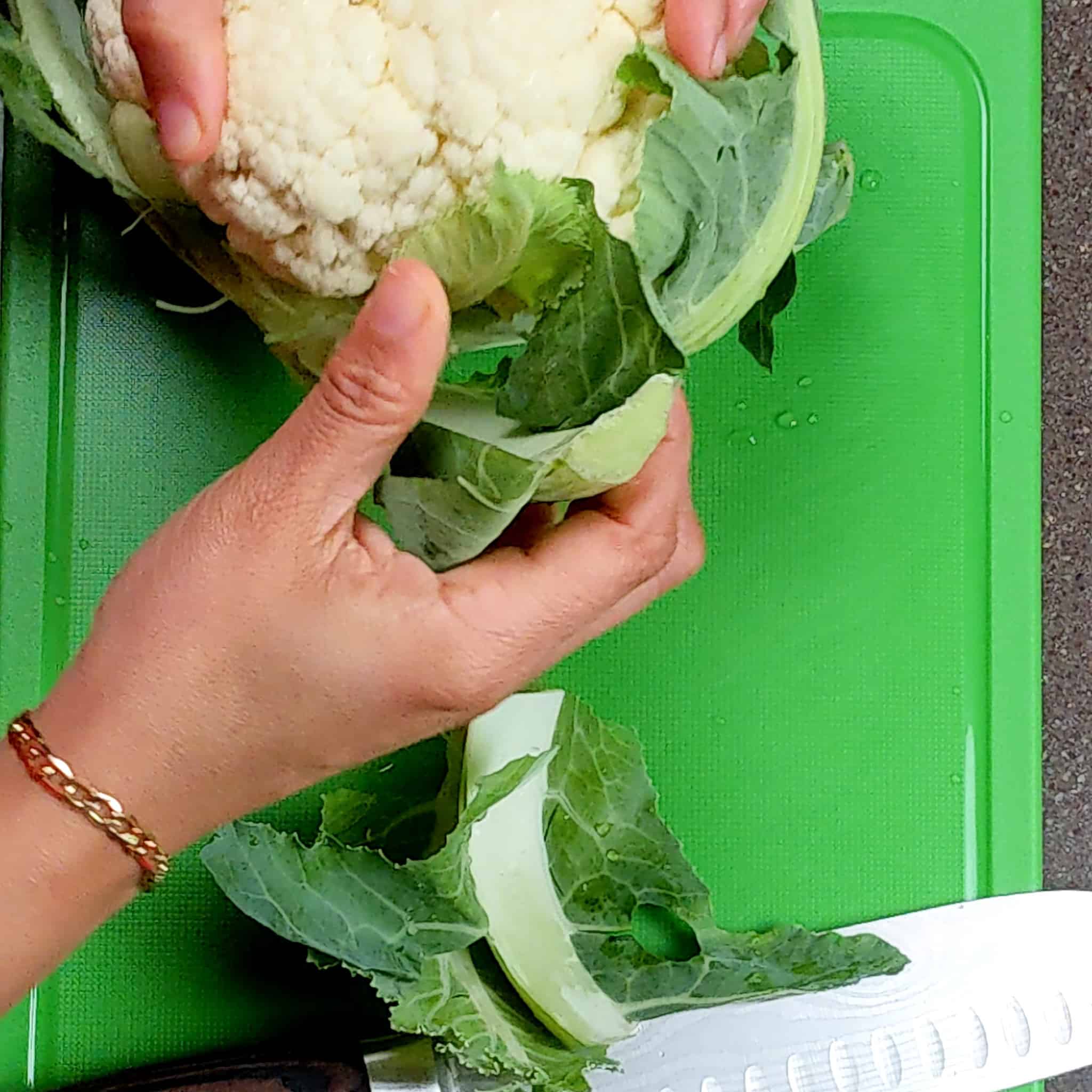
Begin by removing the outer green leaves of the cauliflower and rinsing the whole head.
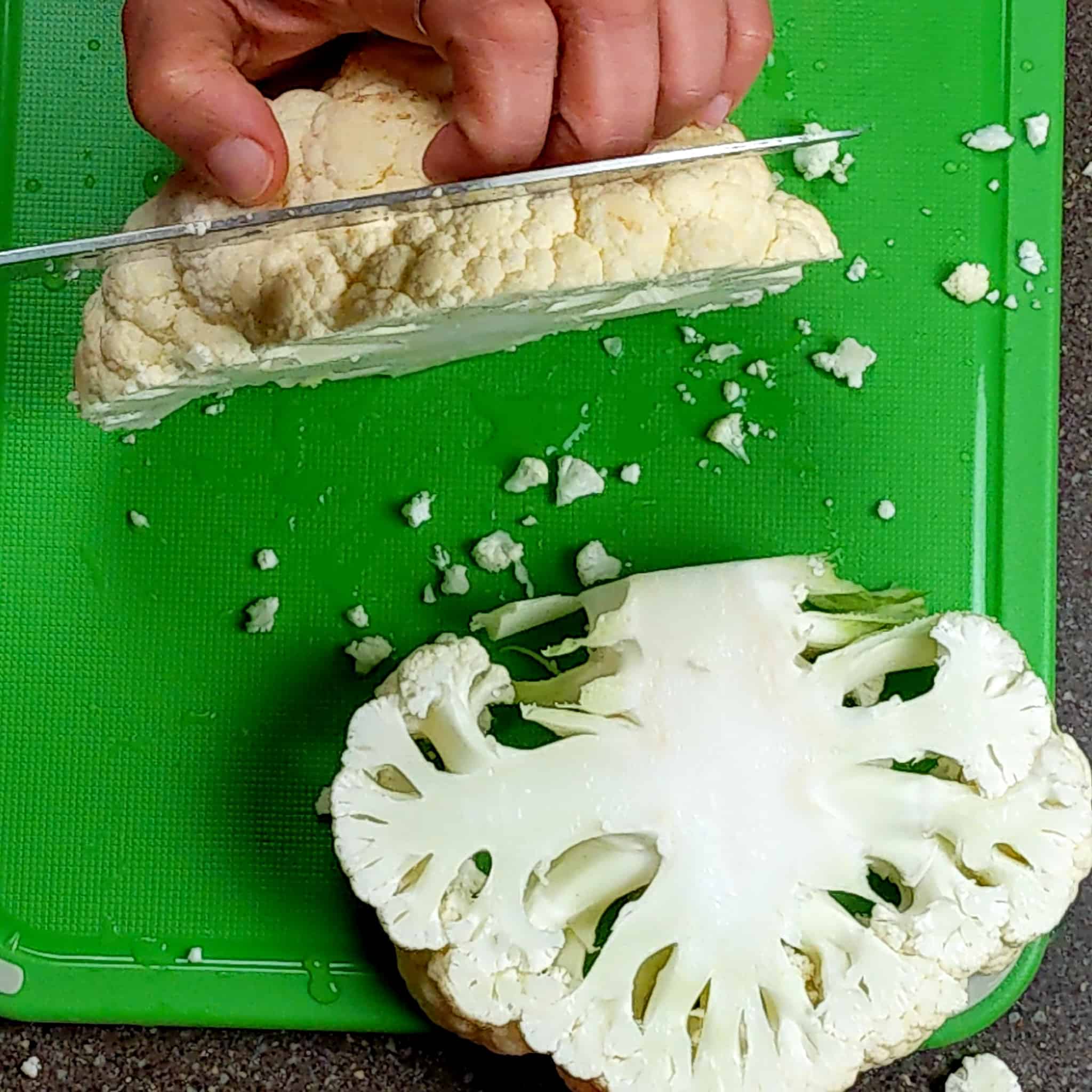
Place the cauliflower on a cutting board with the stem side down. Using a sharp knife, make vertical slices that are about 1 inch thick. These slices will be your cauliflower steaks. Be mindful of the first and last slices, as they may not hold together well due to loose florets.
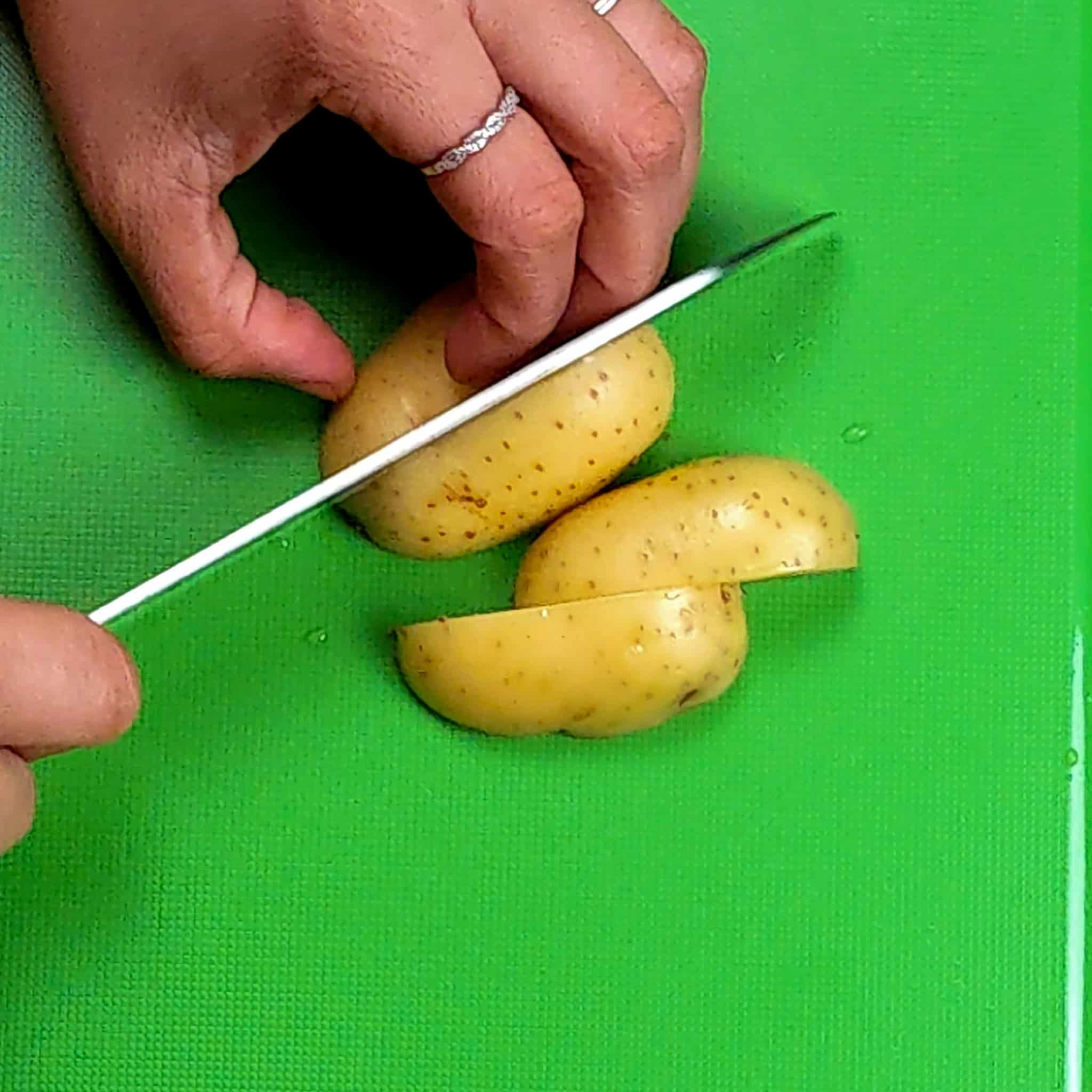
Then, cut each baby potato into quarters by cutting it in half and then in half again.
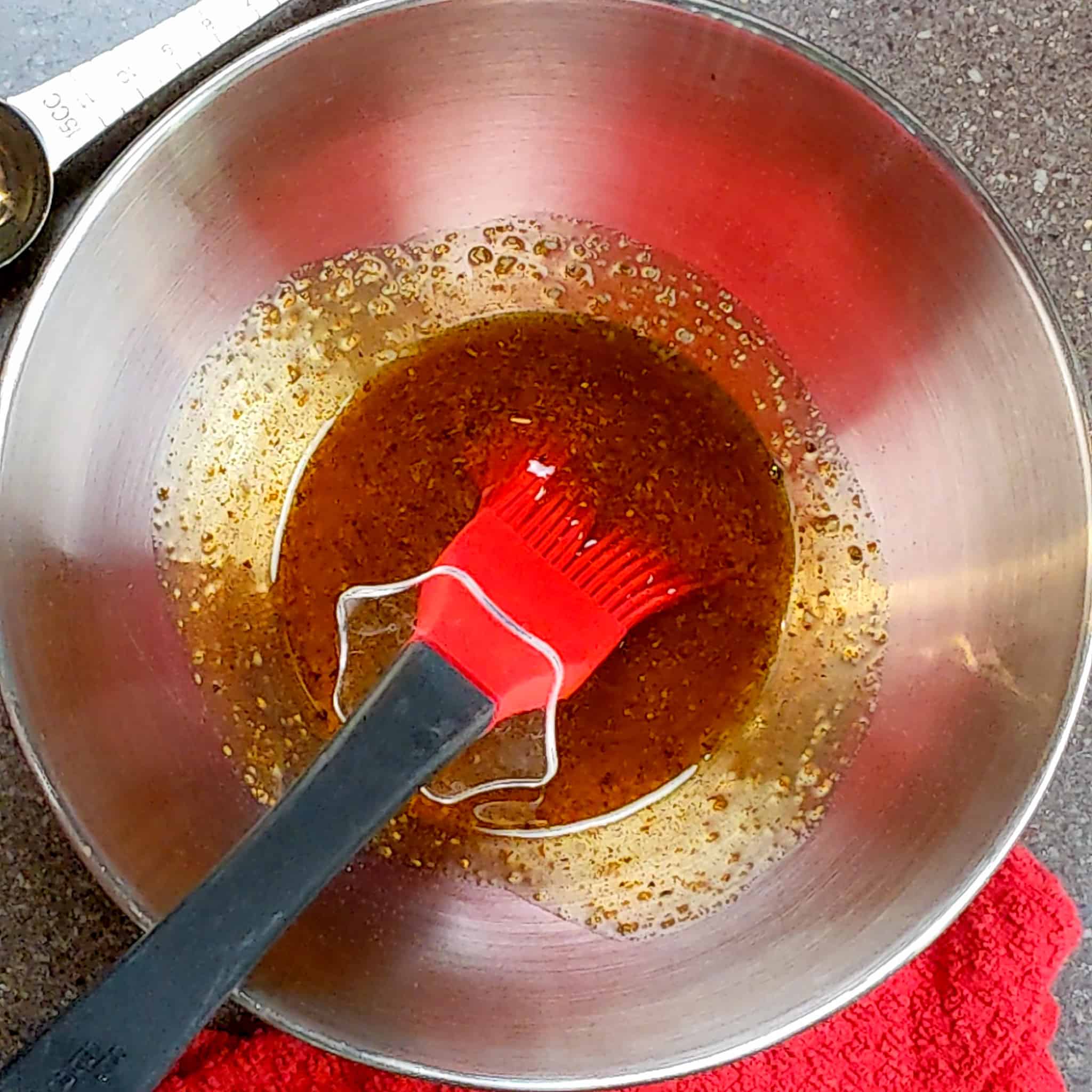
Combine the olive oil, Cajun seasoning, salt, and pepper. To save on the amount of utensils used, use the brush to mix the wet rub.
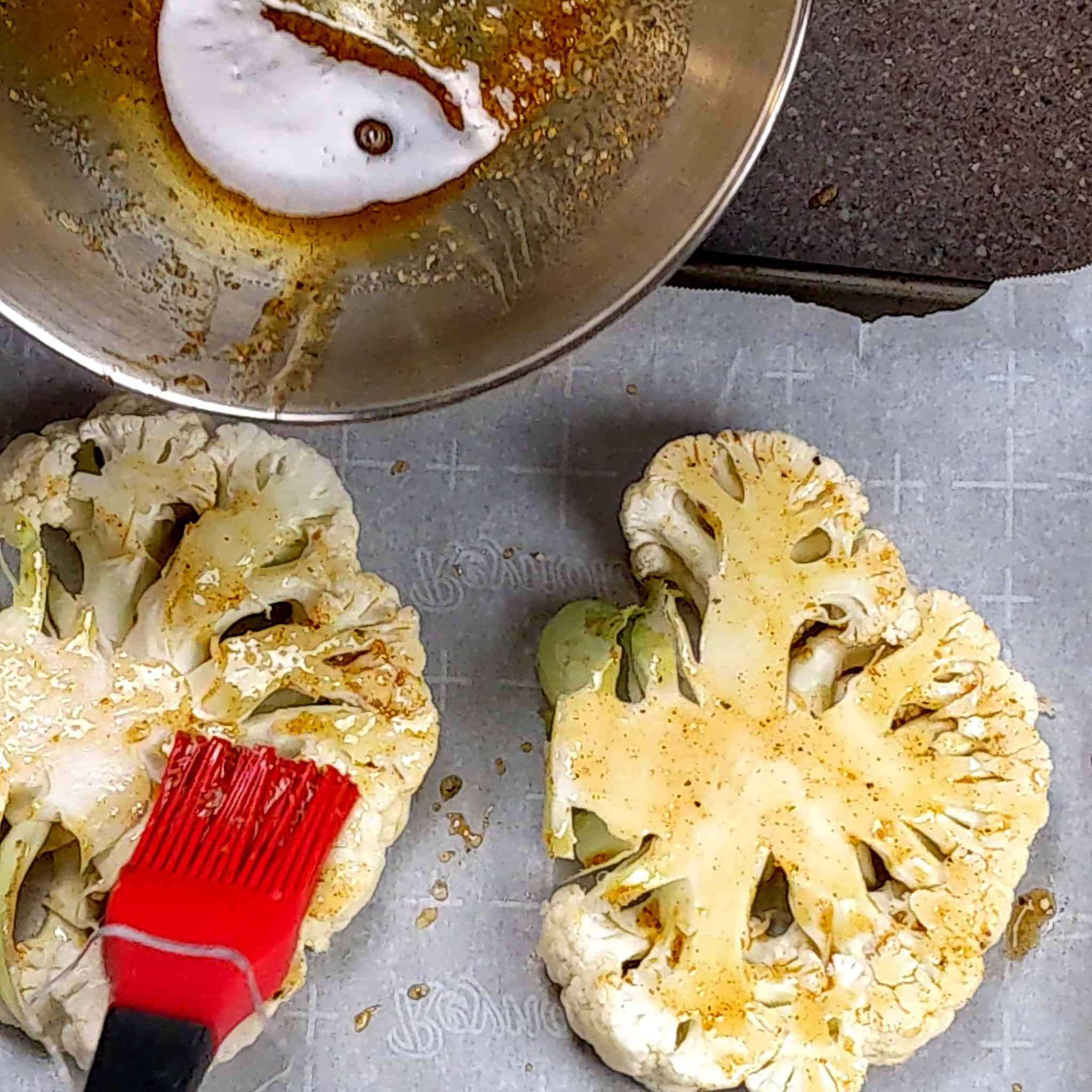
Brush the cauliflower and carefully turn with a flat spatula to coat the other side.
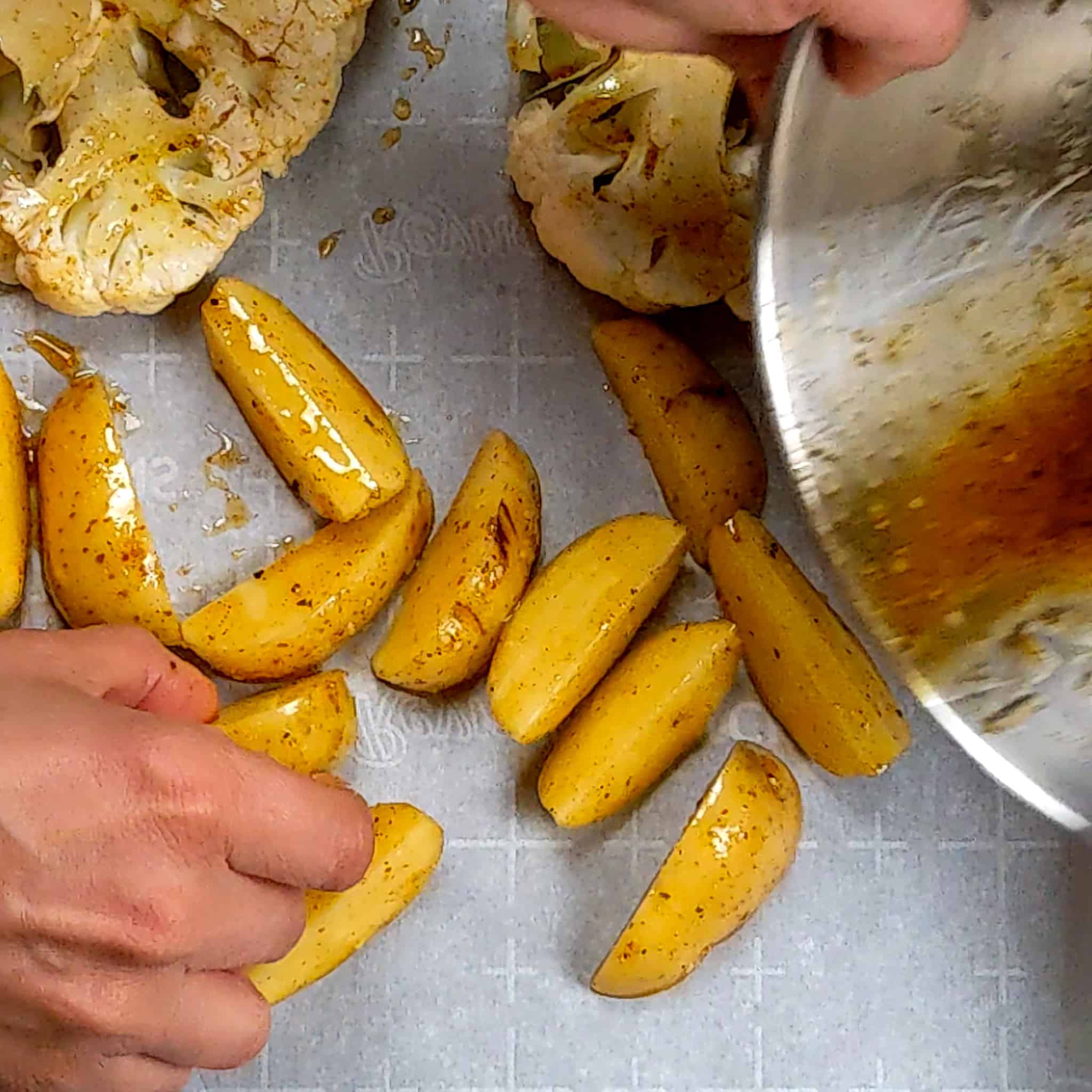
Then, add the potatoes to the bowl, toss them in the wet rub, and lay them on the sheet pan.
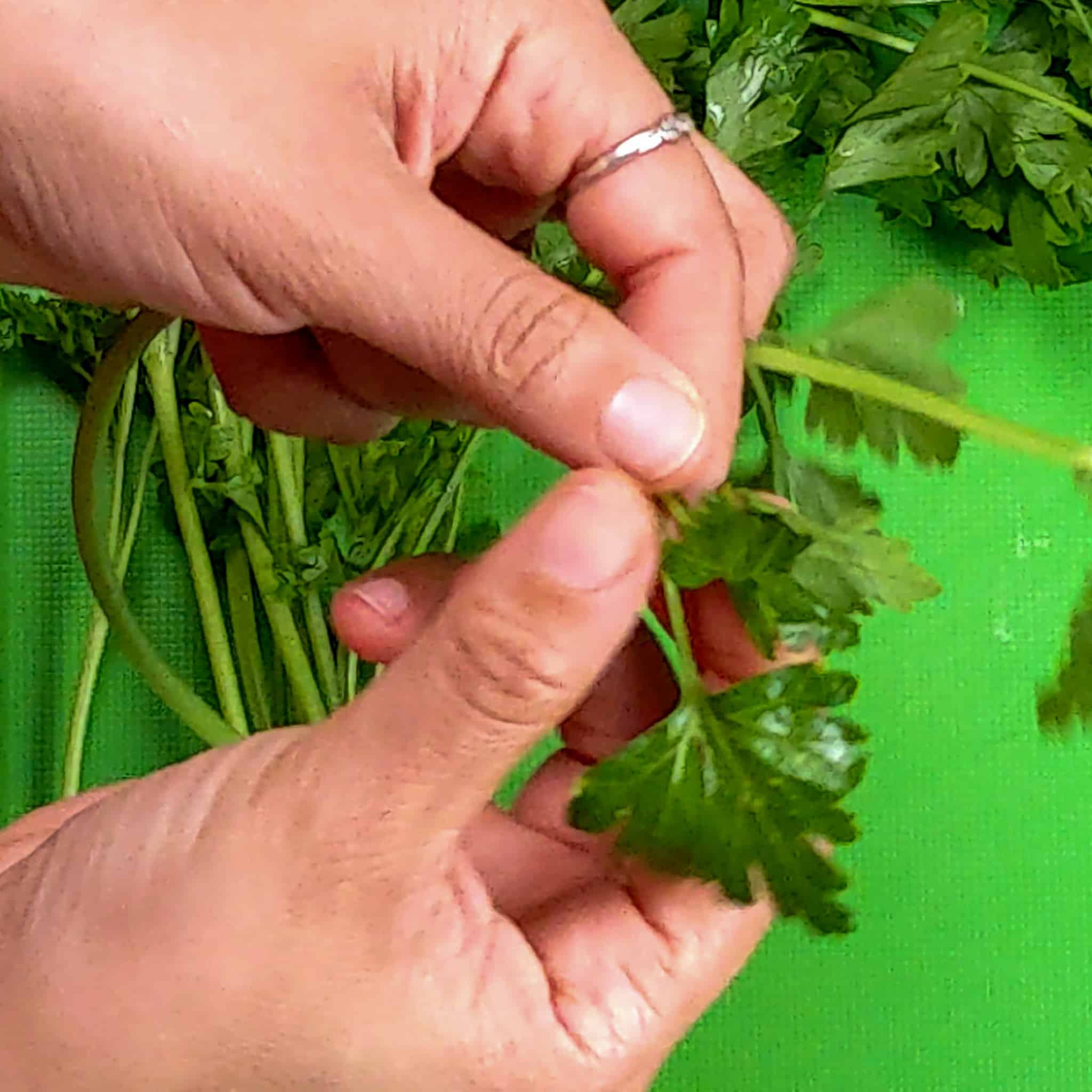
Prepare the parsley by simply picking from the tender short stems, rinsing, drying, and chopping.
Make the Sauce and Dressing
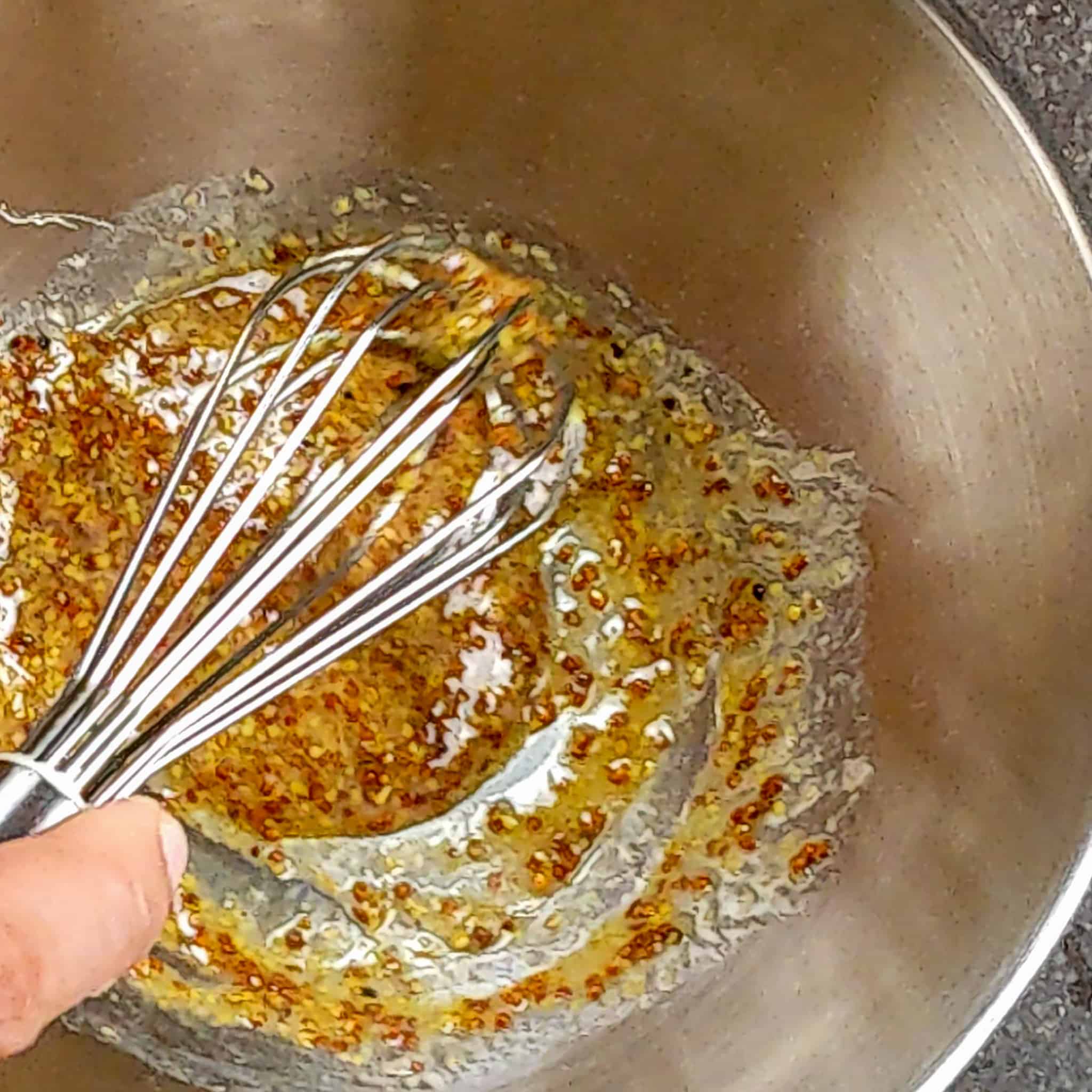
Using the same mixing bowl. Clean the bowl and make the dressing by whisking together the Dijon mustard, honey, and parsley with salt and pepper.
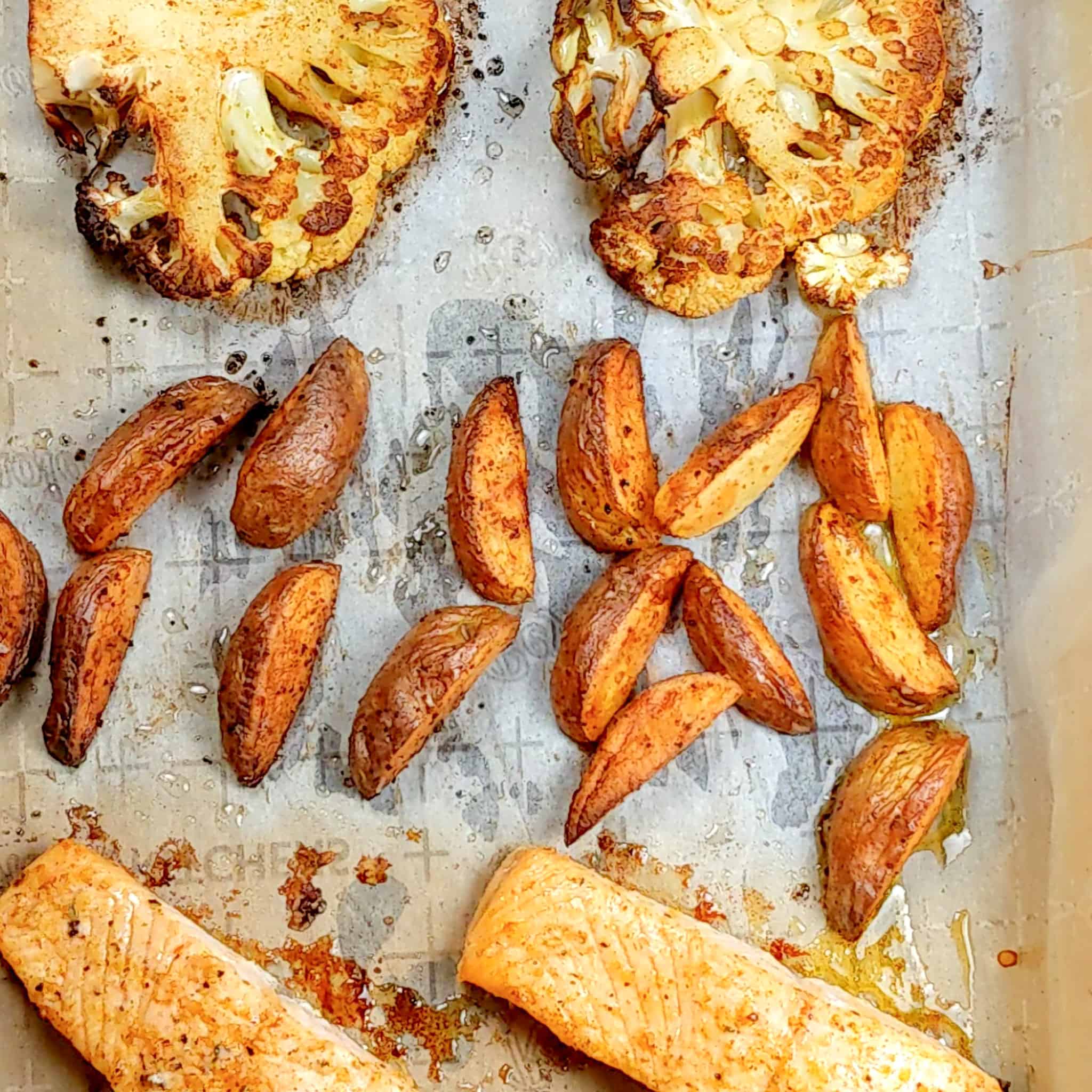
The vegetables and salmon will be ready when the salmon has reached an internal temperature of 145 degrees Fahrenheit using a meat thermometer and is golden brown.
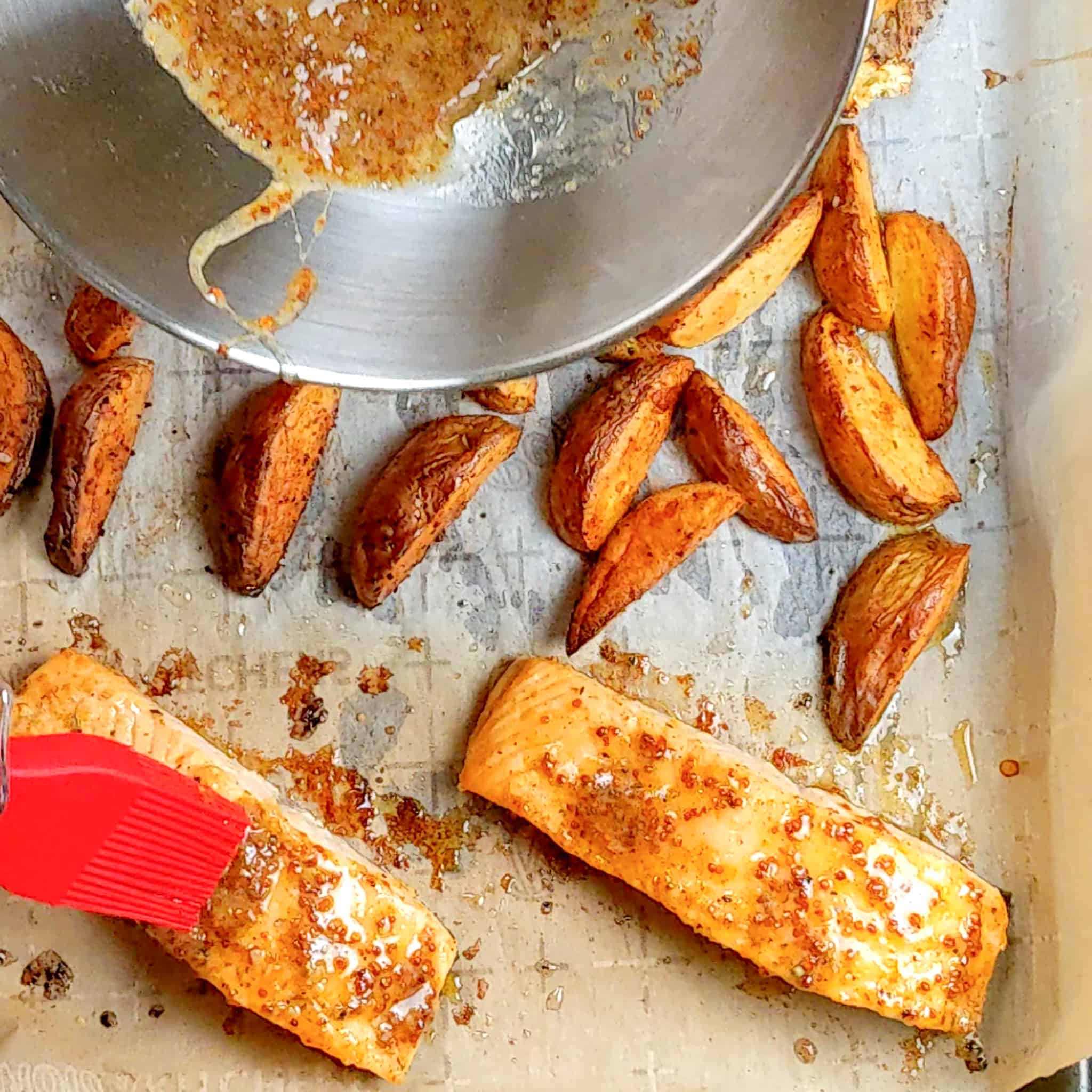
Remove the baked salmon and vegetables from the oven and brush the salmon filets with some of the sauce.
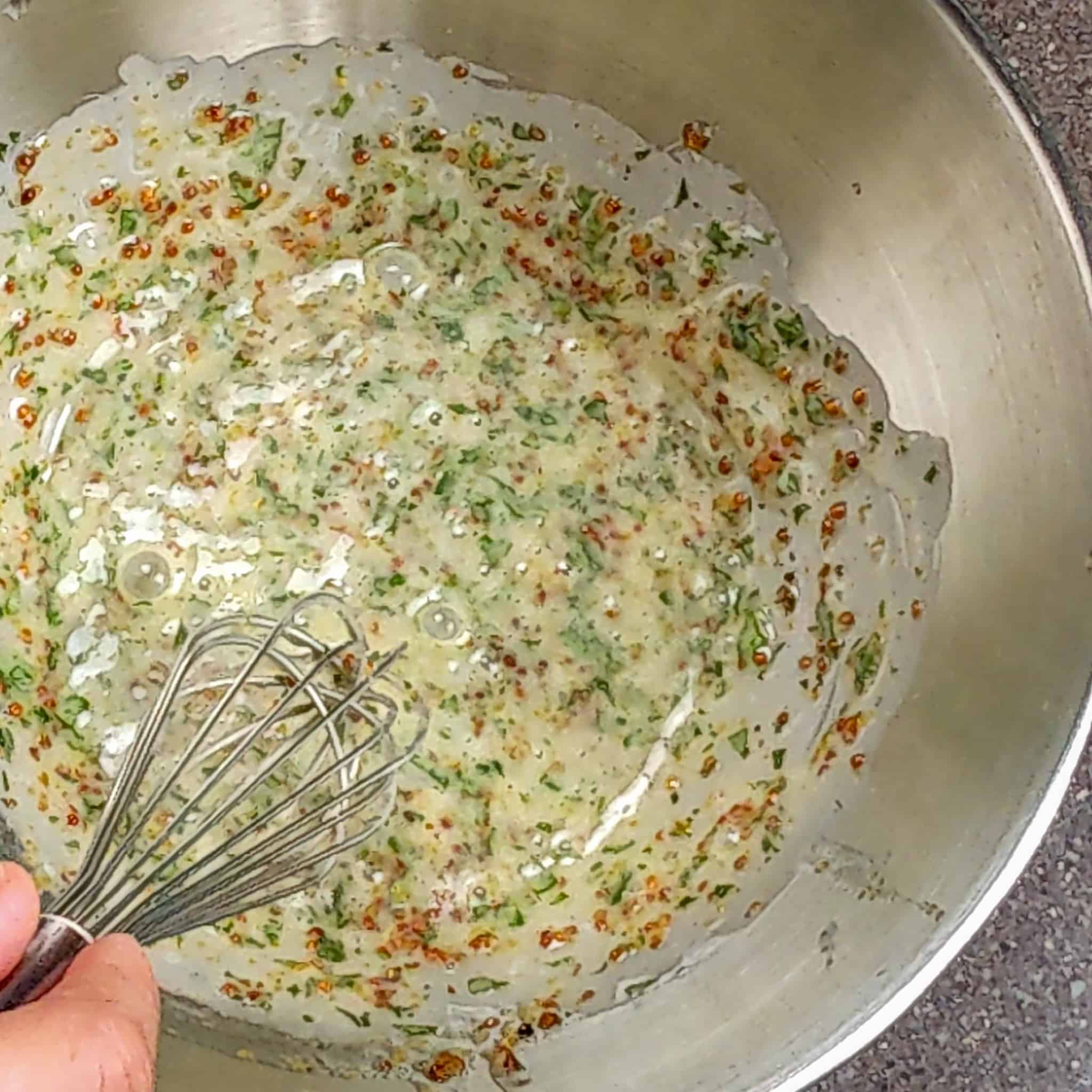
Finally, finish the dressing by whisking together mayonnaise, fresh lemon juice, and chopped parsley. For a more robust flavor, add lemon zest.
Equipment
- Medium Mixing Bowl - To make the wet rub, toss the potatoes and dressing to complete the meal.
- Sheet Pan - Use a half-sheet pan for a serving of two, like the Nordic Ware Baker's Half-Sheet pan. Why sheet pans? They cook food faster than a glass baking dish. But if you choose to use a baking dish, just watch and cook it a little longer.
- Parchment Paper - To place between the food and bakeware for easy cleanup and to prevent food from sticking to the pan.
- Turning or Fish Spatula - To assist with flipping the delicate cauliflower and serving the fish.
- Brush - Used to coat the cauliflower and salmon. I use a silicone pastry brush since it's easy to go from cold to hot meals without distorting the bristles.
- Meat Thermometer - It is always great to have a meat thermometer to cook food to their ideal temperatures to prevent drying out. Most importantly, it is used in order to avoid foodborne illnesses.
Kitchen Must-Haves Reviews
Find a collection of my reviews of kitchen equipment that I have purchased or recommend. Kitchen Must-Haves - Find other tools I use here.
My Rating: ⭐⭐⭐⭐⭐
My Review: This Amazon Basics Silicone Baking Mat works exactly as it should—non-stick, easy to clean, and a perfect eco-friendly swap for parchment paper or foil. I toss it in the dishwasher after use, and it saves me from scrubbing sheet pans. If you own sheet pans, this is the companion you need. I first saw bakers using these in hotel kitchens, and now I can’t imagine cooking without one!
My Rating: ⭐⭐⭐⭐
Purchased: December 10, 2023
My Review: I love the clean, classic look of this Pyrex 3-piece glass mixing bowl set—it’s a staple in my kitchen. Pyrex is known for its durability, and these bowls definitely live up to that reputation. I use them for everything from mixing batters to storing leftovers, and the fact that they’re microwave-safe makes them super multifunctional. They’re also easy to clean and stack nicely in the cabinet. The only reason this isn’t a five-star for me is because I always have that little fear of breaking them when I’m using or storing them, even though they’re made to last.
Substitutions
Dairy Free
- Yay! This recipe is already dairy-free!
Gluten-Free
- Bonus! This recipe is also gluten-free.
Vegetarian
- Salmon Fillets - Replace salmon with firm tofu or tempeh. Press it well and marinate it with the same Cajun wet rub.
Convenience
- Olive oil – Use any neutral oil like canola or vegetable oil.
- Whole-grain Dijon Mustard – Combine yellow mustard with a bit of stone-ground or coarse mustard if available.
- Baby Dutch Yellow Potatoes - Use medium Yukon, russet, or sweet potatoes, cut into skinny wedges to cook uniformly with the cauliflower. One medium potato should be enough for two servings.
- Low-Fat Mayonnaise - Try regular mayonnaise or substitute it with Greek yogurt or sour cream. Remember and don't get confused: Mayonnaise does not contain dairy, and it is dairy-free but not egg-free. If you are allergic to eggs, try vegan mayo.
- Fresh Parsley - If you do not have fresh parsley on hand, try dried parsley or add a small amount of Italian seasoning. Or use 1 teaspoon dried parsley or a sprinkle of Italian seasoning for a quick herb swap.
- Honey - Use maple syrup; however, this may change the flavor a bit, but it just might work!
Change Heat Level - Modify the recipe's heat level to your liking and learn more about the Scoville Scale and Chili Pairings. If you wish for your meal to be less spicy, try using all-purpose seasoning instead or a little bit of Memphis Rub dry seasoning.
It also has similar spices except for the smoky component, but it may work. For more heat, try using hot honey, which is a mixture of honey prepared with chili peppers.
Variations
- Add More Vegetables - Try adding quartered Brussels sprouts, green beans, and/or zucchini.
- Salmon Bowl - Turn this into a bowl by making roasted cauliflower florets instead. Then, serve the salmon, cauliflower, and potatoes with shredded greens or white or brown rice.
- Try also adding more healthy protein, like chickpeas or white beans, to the sheet pan before baking. This would be a great addition to the rice/salad bowl.

Try Something Different - Substitute the Tuna for Salmon in the Healthy Poached Egg Avocado Rainbow Tuna Salad recipe.
Storage and Reheating
Refrigerator
Store any leftover Cajun Honey Mustard Salmon and roasted vegetables in an airtight container in the refrigerator for up to 3 days. Let the salmon cool completely before sealing to avoid excess moisture buildup. For best texture, store the salmon and vegetables in separate containers if possible to prevent fogginess.
Freezer
To freeze, let the cooked salmon and vegetables cool completely. Wrap individual salmon portions tightly in plastic wrap or foil, then place in a freezer-safe bag or an airtight container. Store vegetables in a separate freezer-safe container to maintain texture. Label it with the date and freeze it for up to 2 months for best quality.
Reheating from the Fridge
To reheat, place the salmon and vegetables on a baking sheet and warm in a 300°F oven for about 10–12 minutes, or until heated through. This method helps preserve the glaze and prevent drying out. For a quicker option, microwave on a plate loosely covered with a damp paper towel in 30-second intervals, checking often to avoid overcooking.
Reheating from Frozen
Thaw salmon and vegetables overnight in the refrigerator. Once thawed, reheat in a 300°F oven for 12–15 minutes or until warmed through. For a crispier finish, broil for 1–2 minutes at the end. Avoid microwaving frozen fish, as it may result in uneven texture or rubbery fish.
5 Cooking Tips
Your Cooking Tips Resource Guide - Become a better home cook with tips to help you cook more efficiently on the Cook's Notebook tab. Click here for cooking tips on prepping fish.
- Pat the salmon dry before seasoning to help the Cajun rub stick better and promote even browning.
- Roast everything on parchment paper for easy cleanup and to prevent sticking.
- Toss the potatoes with oil and seasoning separately to ensure they crisp up instead of steaming.
- Let the salmon rest for a few minutes after baking to lock in moisture before serving.
- For extra flavor, spoon any juices from the sheet pan over the salmon just before serving.
Frequently Asked Questions
Yes, just make sure it is fully thawed and patted dry before applying the seasoning and baking.
The Cajun seasoning adds a mild kick, but you can adjust the heat by using a low-sodium or mild Cajun blend or skipping the cayenne if making your own.
Whole-grain Dijon adds texture and tang, but regular Dijon or spicy brown mustard works just as well.
Yes. You can prep the wet rub and vegetables a day in advance. Bake the salmon just before serving for the freshest taste.
This salmon pairs great with roasted veggies, rice, quinoa, or a simple green salad to balance the bold flavors.
Fish Recipes
Looking for other fish recipes like this? Try these:
- 20 Irresistible Fish Recipes
- Calabrian Pepper Salmon with Creamy Lemon Dill Sauce
- Seared Snapper Spicy Creole Sauce and Roasted Vegetables
- Sesame Seed-Crusted Ahi Tuna with Spicy Sesame-Soy Sauce
One Pot Meal Recipes
Looking for other one-pot meal recipes like this? Try these:
- One-Pot Meals That Make Family Meal Prep a Breeze
- Jerk Fajita Trio: 3 Must-Try Recipes for a Spicy Weeknight Cook-Up
- Easy Sheet Pan Jerk Chicken Fajitas | Oven-Roasted Yum
- Jerk Steak Fajitas | Super Easy 30 Minute Meal
📖 Recipe
Cajun Honey Mustard Salmon with Cauliflower Steak and Potatoes
Ingredients
Vegetables and Wet Rub
- 1 cauliflower head
- ¼ cup olive oil
- 1 teaspoon Cajun seasoning
- kosher salt and ground black pepper
- 3 large Baby Dutch yellow potatoes
Salmon
- 8 ounces salmon fillets skin-on -optional
- 1 tablespoon whole-grain Dijon mustard
- 2 tablespoon honey
- kosher salt and ground black pepper
Dressing
- 1 tablespoon low-fat mayonnaise
- ½ lemon juiced (zest optional)
- ½ bunch of parsley chopped
Equipment
- Parchment Paper
Instructions
- Before Starting, Note: The cauliflower may only yield 2 to 3 steaks per head. You can use the rest for cauliflower rice, roasted florets, mashed, or cooked in curry. If you plan to use skin-on salmon, slit the salmon skin.
- Set the Oven: Preheat the oven to 425 °F.
- Make the Wet Rub: In a medium mixing bowl, combine olive oil, cajun seasoning, salt, and pepper and set aside.
- Prepare the Cauliflower: Remove the out leaves of the cauliflower. Then rinse the head. Placing its stem side down on a cutting board, make 1-inch thick slices. Pat dry the steaks with a paper towel before seasoning. Note: The first slice may fall apart due to loose outer florets.
- Next, place the cauliflower steaks on a sheet pan with parchment paper and brush both sides with the wet rub. Be delicate; use a turning/fish spatula to help flip and prevent breakage.
- Prepare the Potatoes: Quarter the potatoes to ensure uniform cooking with the cauliflower steaks. Then, toss the potatoes in the wet rub, pick them out, and place them on the sheet pan along with the cauliflower, leaving room later for the salmon. Do not let the remaining wet rub pour onto the sheet pan. Set aside the rest of the wet rub to use later.
- Bake the Vegetables: Place the sheet pan in the oven and bake for 15 minutes. In the meantime, rinse and chop the parsley and set aside.
- Bake the Salmon: Remove the sheet pan and close the oven door immediately. Brush the remaining wet rub onto the salmon, add it to the sheet pan, flip the cauliflower steaks, flip the potatoes once, and place the pan back in the oven for another 15 minutes. While the salmon bakes, prepare the dressing.
- Make the Salmon Sauce: Clean and dry the mixing bowl and brush. Then, combine Dijon mustard, honey, parsley, salt, and pepper.
- Coat the Salmon: When the salmon is cooked and reaches 145 degrees Fahrenheit, brush some of the honey mustard sauce onto the cooked salmon and set the tray aside.
- Make the Dressing: Save a teaspoon of the chopped parsley for garnish. Then, whisk together the mayo, lemon juice, and chopped parsley in the same bowl with the honey mustard.
- Plate Up: Place cauliflower first on one side of the plate, then the potatoes on the other, and top the salmon in the center. Drizzle the creamy honey mustard sauce around the plate on the vegetables. Garnish with chopped parsley.
Video
Nutrition
Subscribe to my YouTube Channel
SUBSCRIBE: 👈To my YouTube Channel to Get Notifications of New Videos.
Have a Comment or Question?
If you have a question or comment about this honey mustard salmon recipe, please post it below. You will definitely get a quick response. It also helps our other readers to stay informed. Thanks!

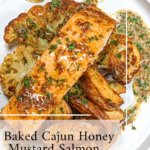
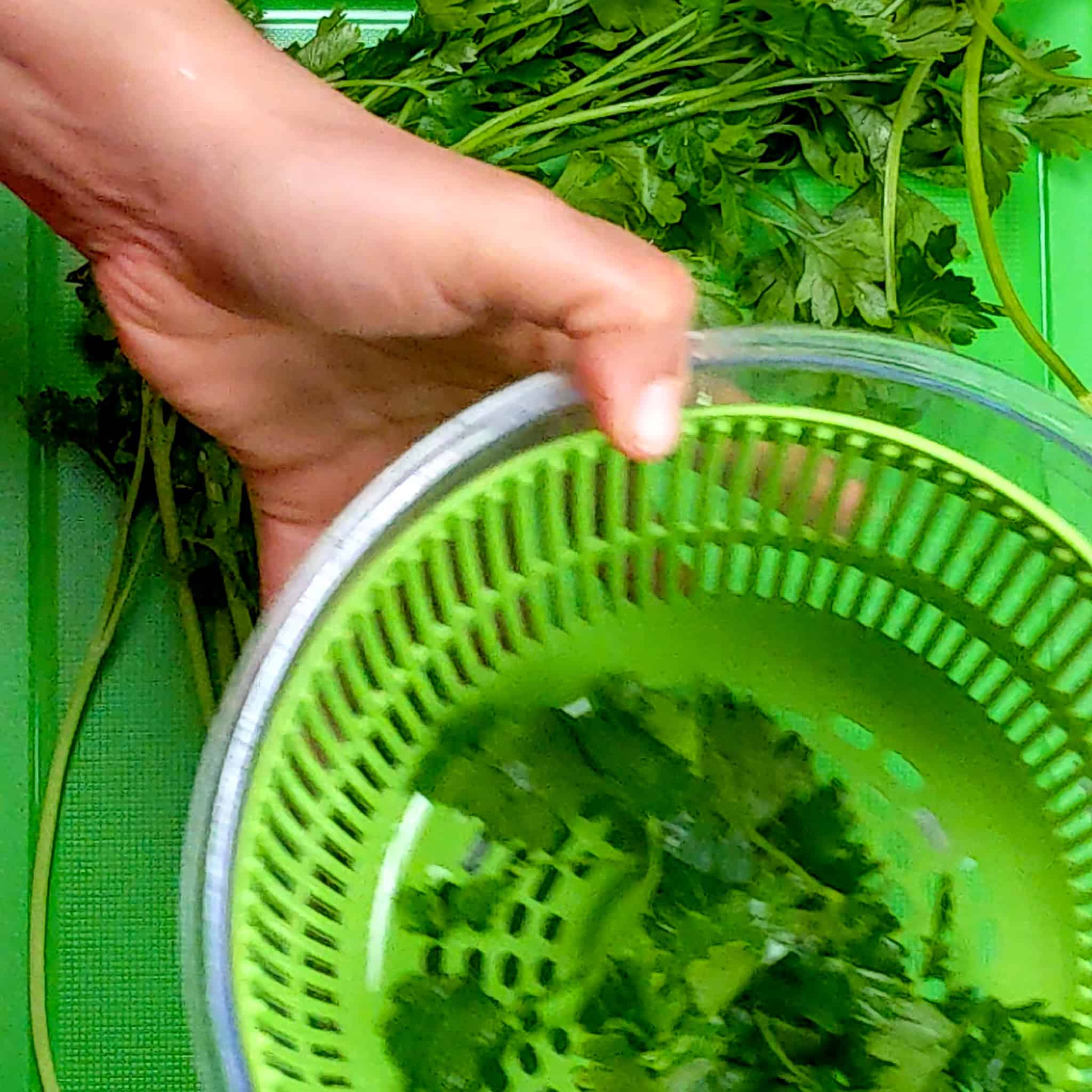


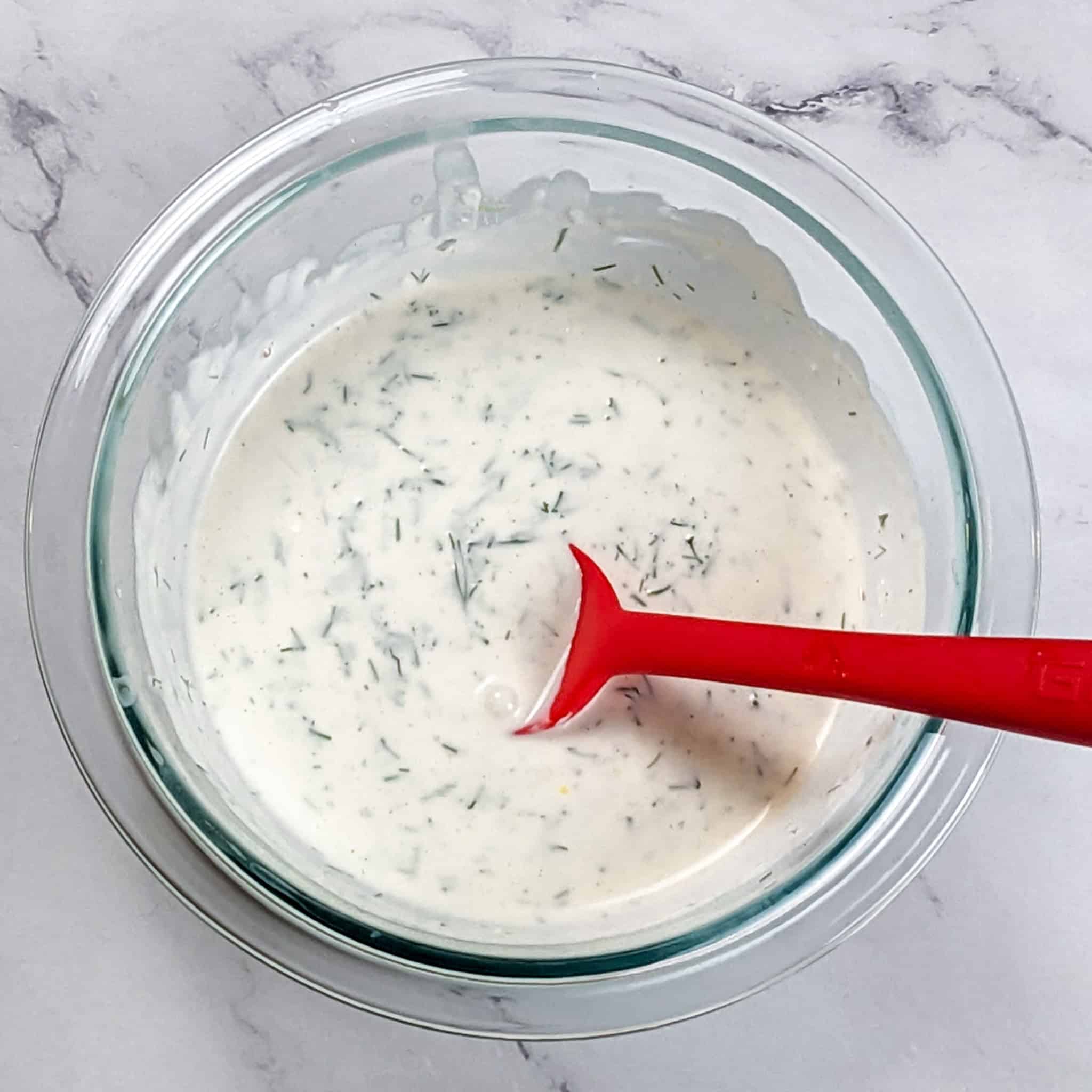
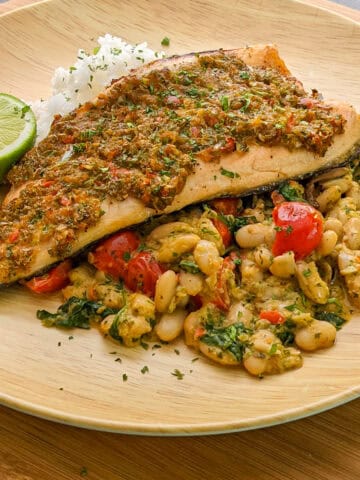
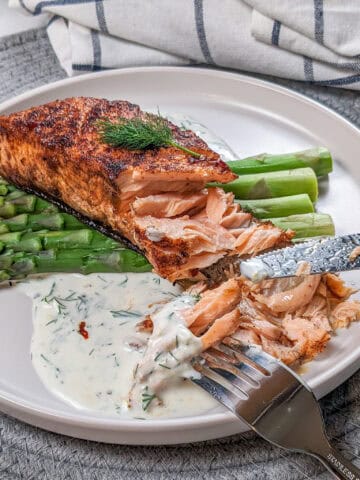
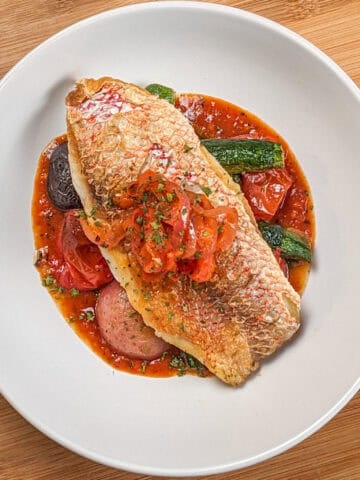
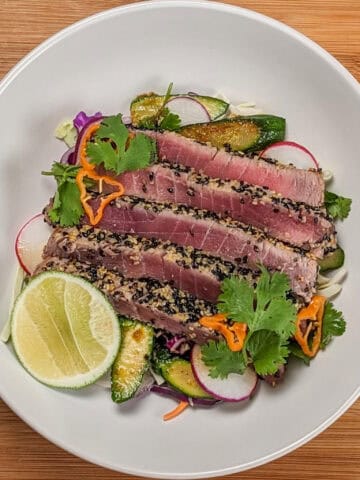
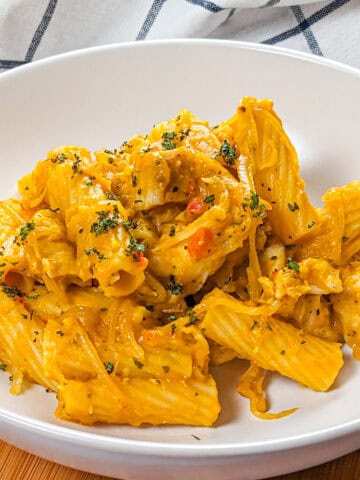
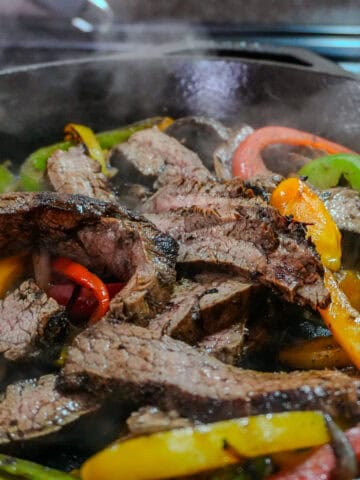
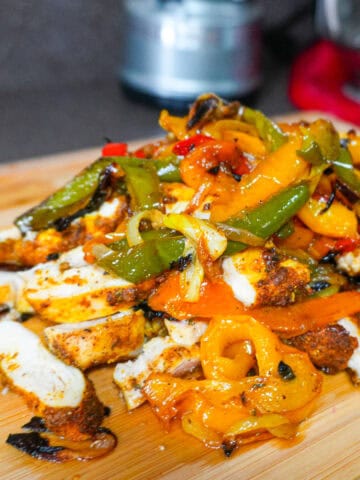
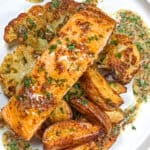
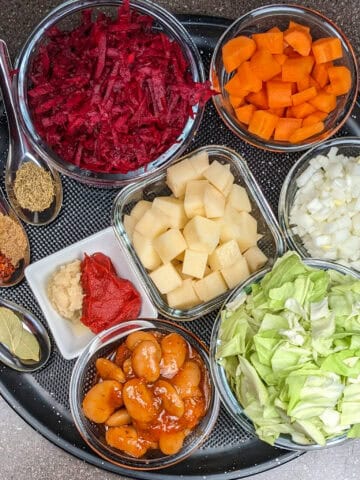
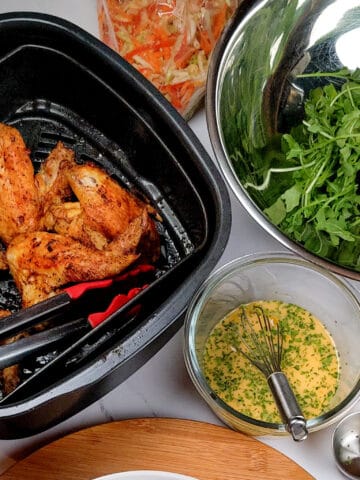
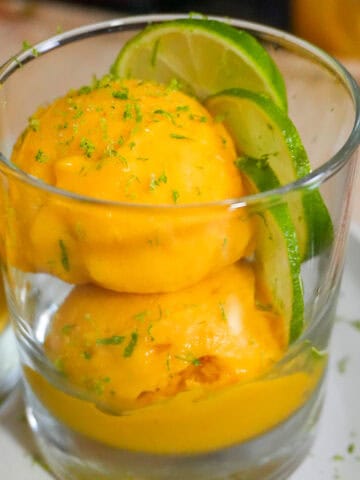
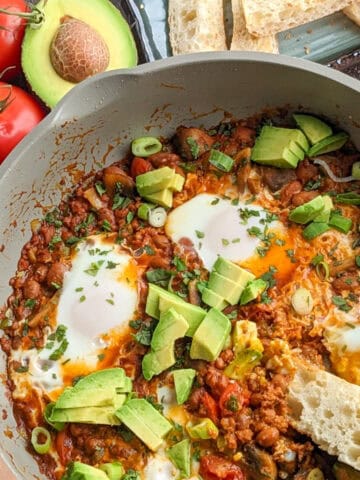
Leave a Reply